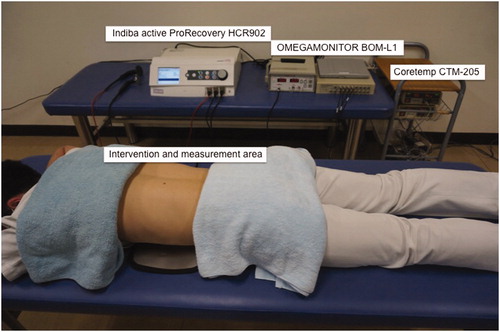Figures & data
Figure 2. Experimental procedure. Haemoglobin saturation and tissue temperature were measured during 5 min before the intervention (I0, T0). Then, the interventions were performed for 15 min. After the intervention, haemoglobin saturation continuously measured for 30 min, and it was divided into six intervals; from I1 to I6. Tissue temperatures were measured seven times (T2–T7) after the intervention every 5 min.

Table 1. Haemoglobin saturation in each group.
Table 2. Tissue temperature in each group.

